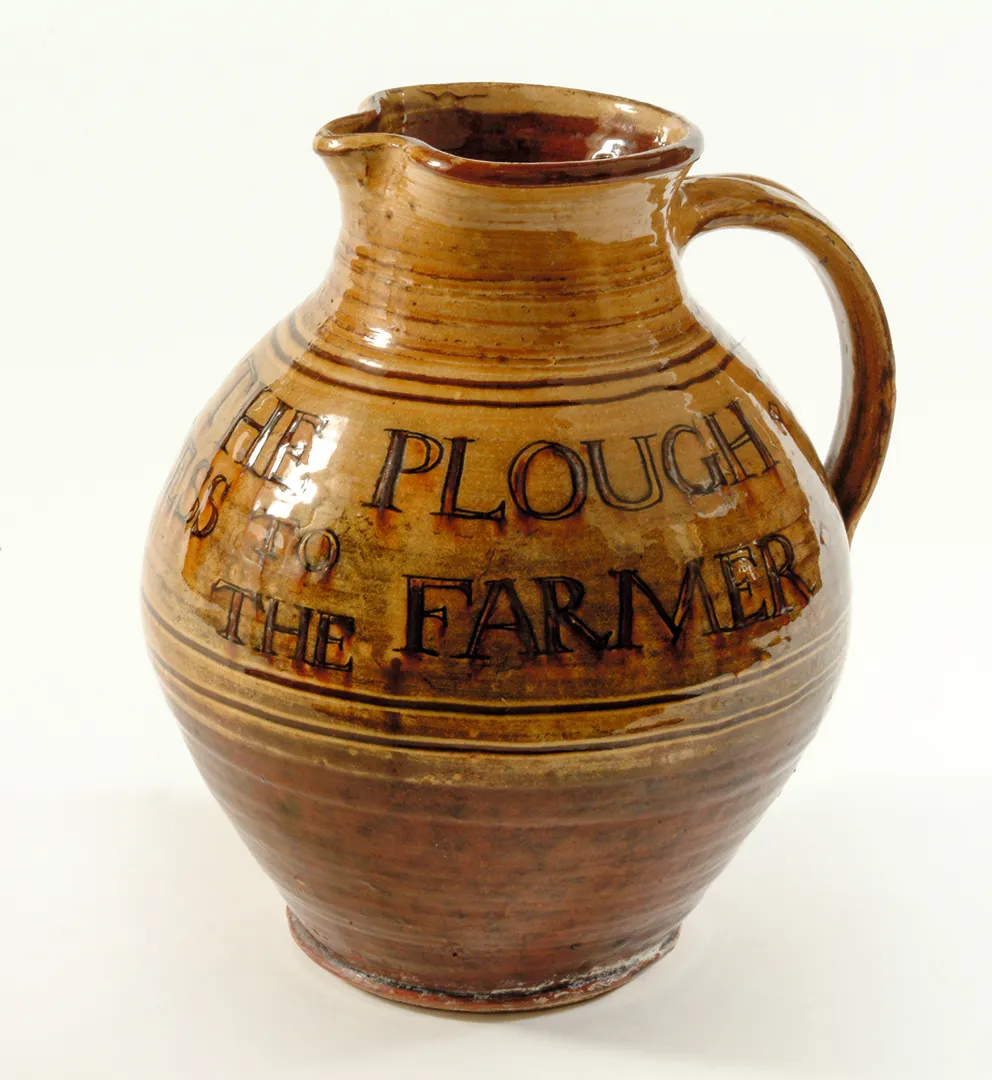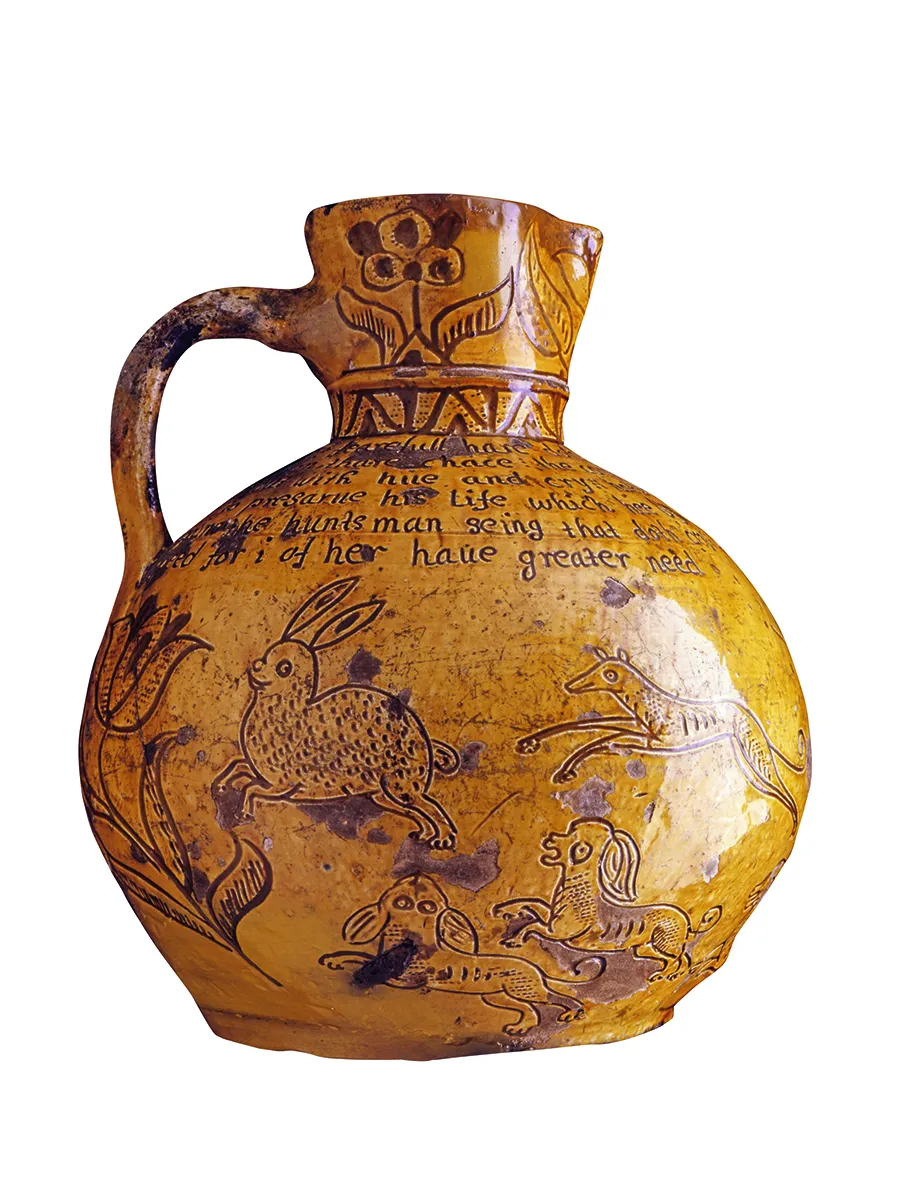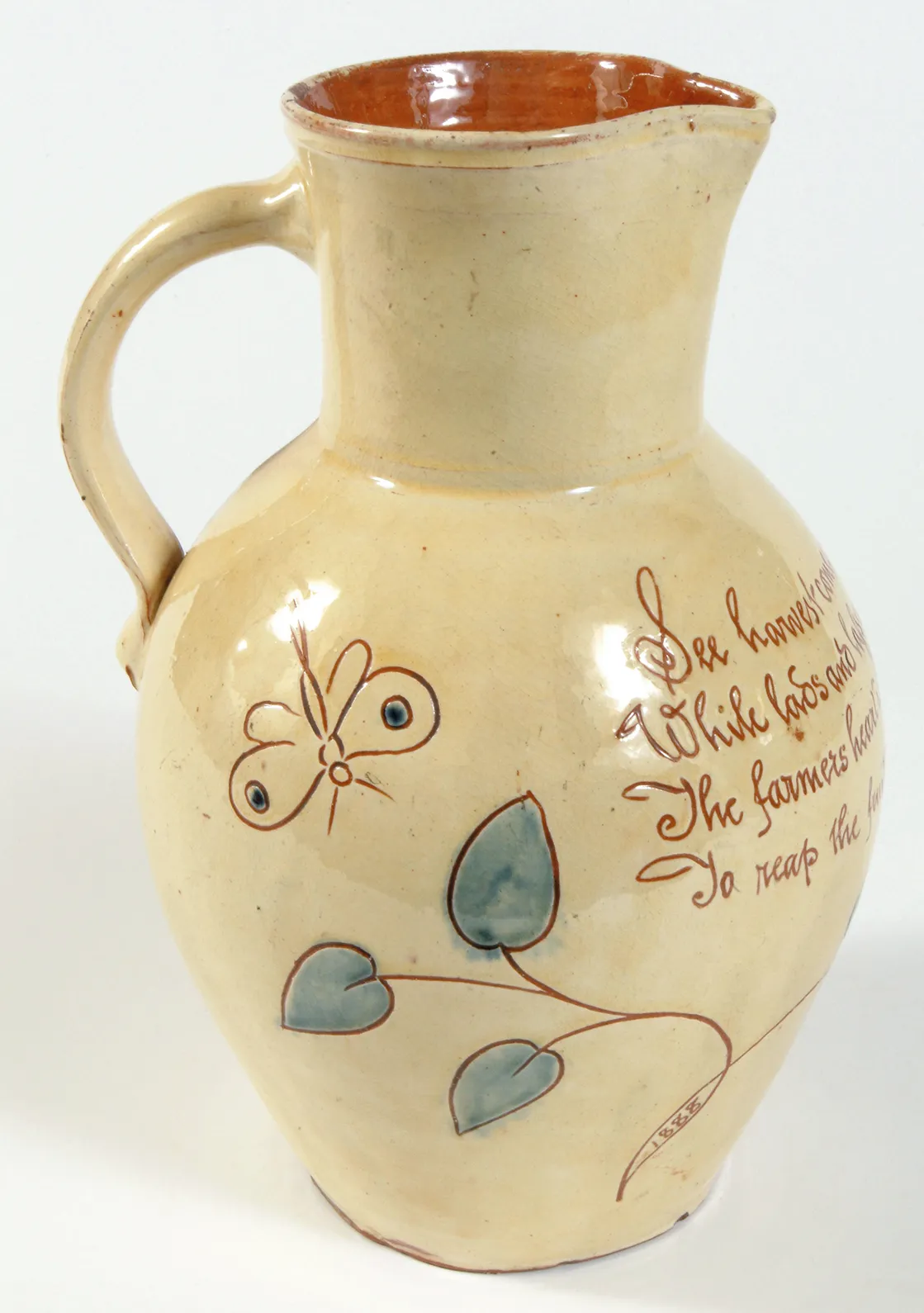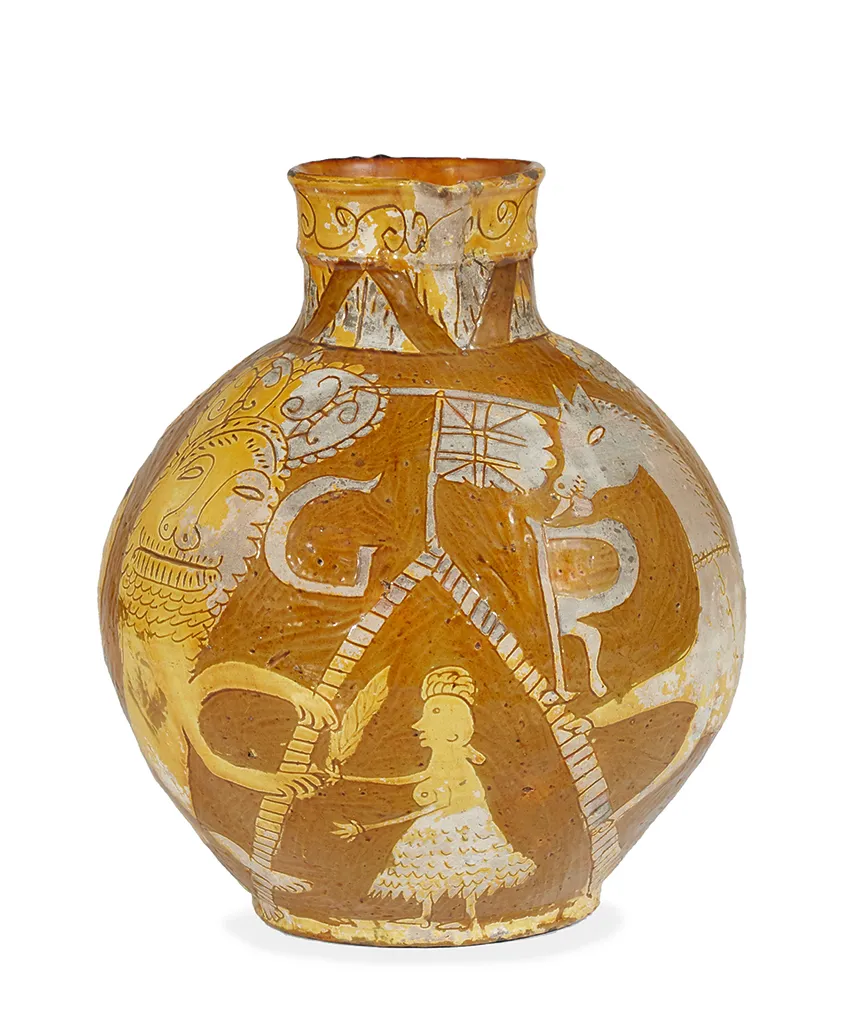The giant globe-shaped harvest jug commands attention from the opposite end of the room. The 18th-century terracotta and honey-coloured vessel on display in the Burton gallery and museum in Bideford celebrates Ceres, goddess of the harvest. Naively drawn wearing a floaty headdress and tight bodice, she is holding a sickle and a sheaf of corn. On the reverse, a heart-shaped cartouche contains a rhyme, the date 1797 and the name Mr Parker. The whopper of a jug sold at Christie’s
in 2010 for £11,875.
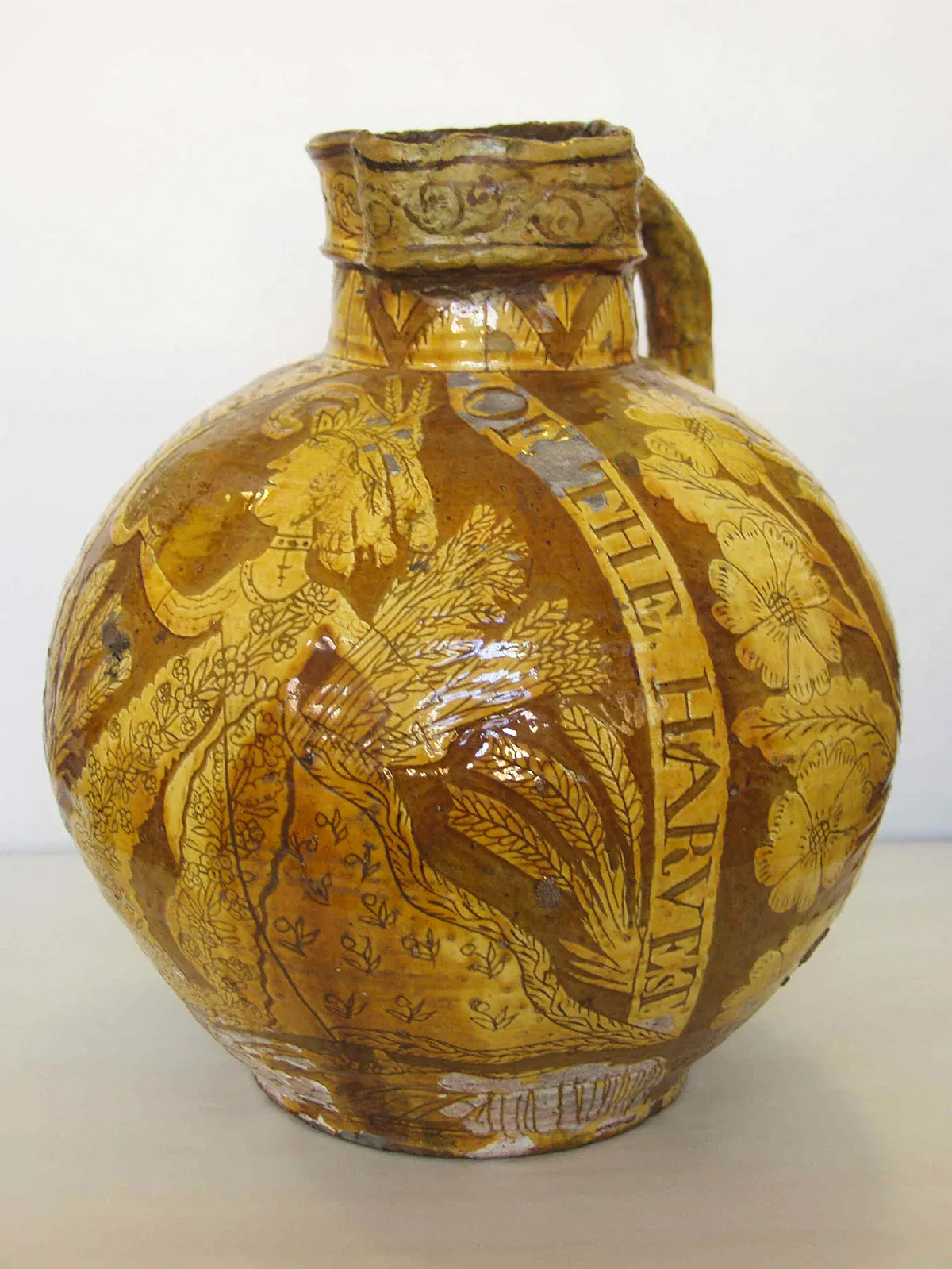
The port town of Bideford in north Devon is the spiritual home of the harvest jug and the Burton holds about 30 examples in its collection, as well as dozens of assorted slipware jugs in the same tradition. Neighbouring Barnstaple has an equally illustrious pottery pedigree.
‘Harvest jug’ is the generic term for celebratory slipware jugs that were made to hold ale or cider at harvest suppers or other special occasions. ‘Celebrations could be a harvest home, a wedding or a ship launch and, while harvest happens all over the country, the best-known jugs were produced in north Devon from about 1720 to 1910,’ says John Edgeler, slipware collector, curator and author. ‘The materials there were tailor-made for decorated jugs.’
The pottery was crafted in red earthenware with a white ball-clay slip (a runny clay), both readily available in the area. Proximity to the sea allowed for easy transportation. The slip was scratched through with a pointed tool to provide sgraffito decoration. An alternative technique was to scrape away the background slip to leave the main motifs in relief. The overall yellow appearance is a result of iron oxide in the clay that the potters added to the glaze.
In the 18th century, the Bideford area was well endowed with so-called country potters. Most of the time, they were making everyday wares but, occasionally, the gentry or wealthy farmers would commission a harvest or celebratory jug. These were handed down within families, limiting the number that become available today on the open market.
The typical shape is a bulbous body, a flared narrow neck and a scroll handle. Plainer harvest-style jugs would have carried ale to workers in the fields. But commissioned jugs were highly decorated with simple or stylised motifs. Subjects ranged from the natural world, such as tulips and butterflies, to royal emblems, such as unicorns and flags, and rhyming verses that referred to farming, drinking, the perils of the sea and the potter’s art. ‘When men do Laber hard and swet,’ reads one, ‘good Ale is bether far than meet.’ The misspellings add to the folksy charm, as does the fact that the lip of the jug would sometimes be inscribed with a face. They also act as social history. For example, a Barnstaple marriage jug from 1741 shows the bride and groom dressed in the fashions of the day.
Inevitably, in a seafaring community, maritime themes are also common. An eye-catching example, dated 1757 and signed Thomas Fields, includes mythical sea creatures, a compass rose and a sailing ship. It is inscribed with a verse about ‘the larger monsters of the deep’. The jug sold at Christie’s in New York last year for $40,000, making it one of the most expensive ever. A jug of similar design in the Burton has drawings of rather woolly-looking fish, as though the decorator might have been more familiar with sheep.
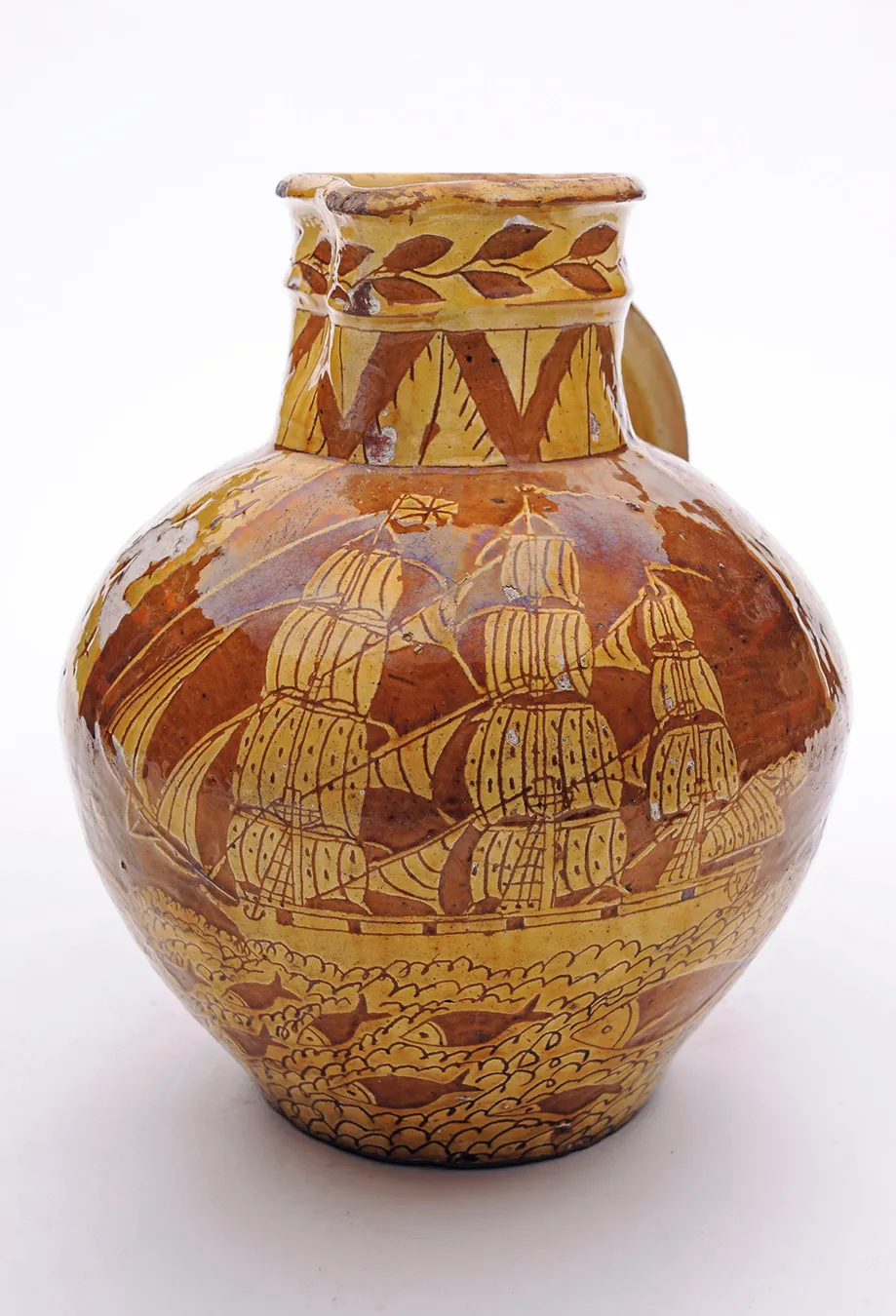
Many early jugs are by potters about whom very little is known. The exception was the Fishley family of Fremington, near Barnstaple. They were an influential potting dynasty, who dominated the production of harvest-style jugs for 100 years. The pottery was established by George Fishley in 1810 and his descendants, Edmund, Robert and Edwin, continued the tradition until the early 20th century.
‘In the 18th century, harvest jugs were ordered for special occasions,’ says John. ‘Come the 19th century, you get a greater democratisation. They became keepsakes and increasingly commercial. People thought they should be collected, so they were exported around Britain or to America. Edwin Beer Fishley became internationally famous.’
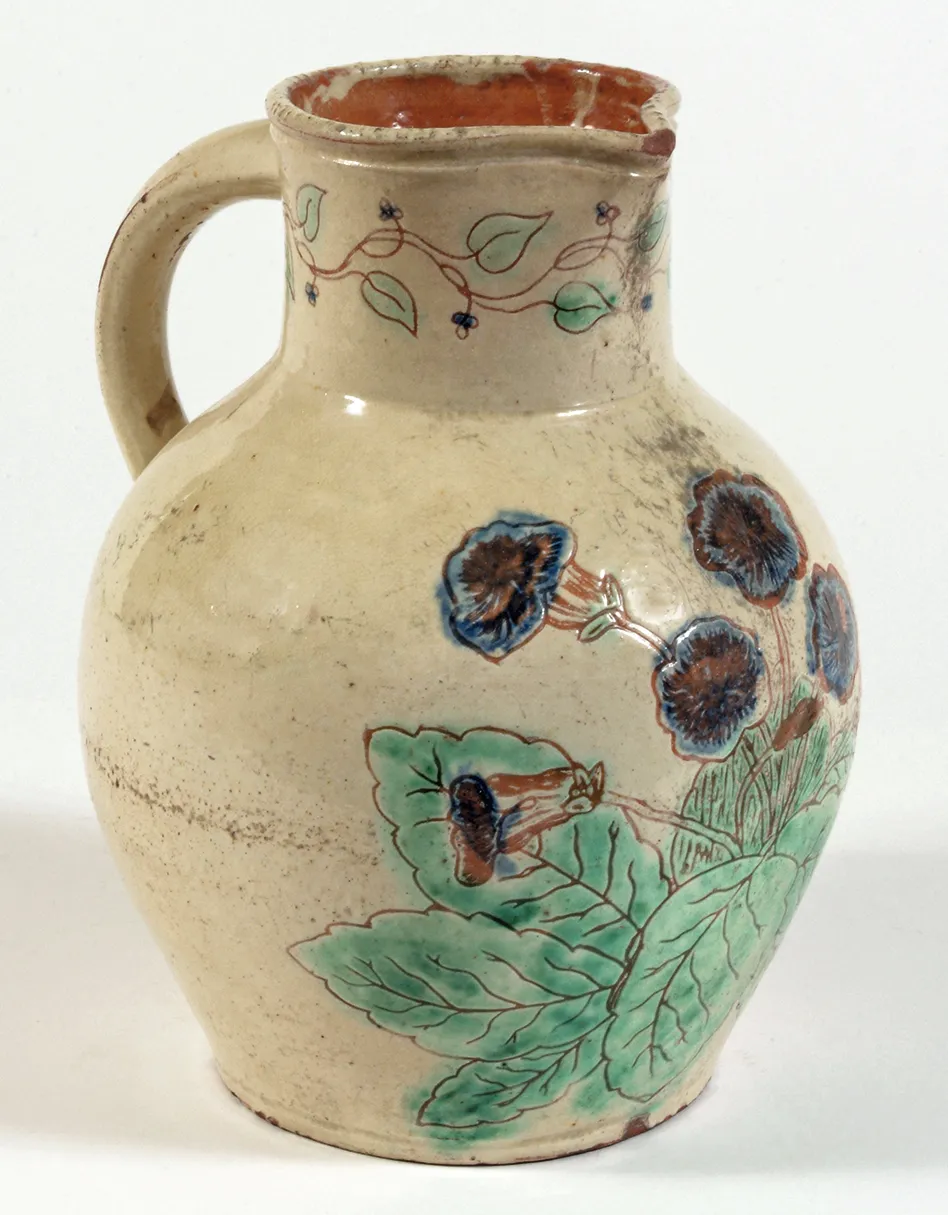
Extensive private collections are rare and collectors tend not to advertise their interest. Two of the major collectors of slipware were Dr J.W.L. Glaisher (1848–1928), whose pots are in The Fitzwilliam Museum in Cambridge, and Reg Lloyd, a Bideford artist whose acquisitions are now in the hands of the Burton. Starting in 1948, Lloyd found harvest jugs in local antiques shops and at Portobello Road in London then, ultimately, sellers came to him. He sold his collection, valued at £500,000, 20 years ago because of insurance pressures, but the buyer subsequently sold it to the Burton despite keen interest from America.
The limited supply of fine early examples keeps prices high and opportunities down. ‘In the past five years, I’ve seen an average of two on the market each year across the auction houses, of varying quality,’ says Jim Peake, British ceramics specialist at Bonhams. Peter Strong, a slipware collector and restorer, has bought and sold about a dozen harvest jugs since the 1980s. ‘It’s quite an obsessional search,’ he says. ‘If one comes up for sale, it causes quite a stir.’
Damage in the form of cracks or glazing loss can be an issue, however. ‘That’s the nature of the fabric and shouldn’t put people off,’ says John. ‘The form is a good thing and they have a vitality about them. These weren’t made by taught artists. They were potters expressing their soul.’
Collectors with modest budgets can still buy smaller, harvest-style keepsake jugs made in the same tradition. ‘I bought a charming little penny jug, about five inches high, for £200 a couple of years ago,’ says John, who has been collecting since his teens. ‘It was made in Bideford in the 1890s and has the motto: “Despise me not though I am small / Fill me up and I’ll please you all.” These still turn up and are part of that folk-art tradition.’
Reg Lloyd’s favourite jug was equally small and featured a lifeboat rescue. He felt sure it had been decorated by somebody who had been in a shipwreck. ‘He must have known what it was like because there is this great mass of ropes drawn so quickly into the wet clay,’ Reg said in an interview.
The enduring appreciation of the Bideford potters and the Fishleys was assured by the patronage of key studio potters of the 20th century, notably Bernard Leach and Michael Cardew, who were influenced by the Devon harvest-jug form. One Cardew version made in 1925, while he was at the Leach pottery, sold at Bonhams in 2008 for £7,440, though his jugs made at Winchcombe can be found for less than £1,000.
In Bideford today, Harry Juniper has been making harvest-style jugs for over 60 years, documenting everything from family trees to naughty postcards. Other contemporary potters inspired by the same slipware tradition include Philip Leach, John Hudson and Doug Fitch. Their work may well be antiques of the future, though the fluidity of the original wares, which were crafted with no eye to future value and simply expressed the sentiments of the age, is hard to match.
